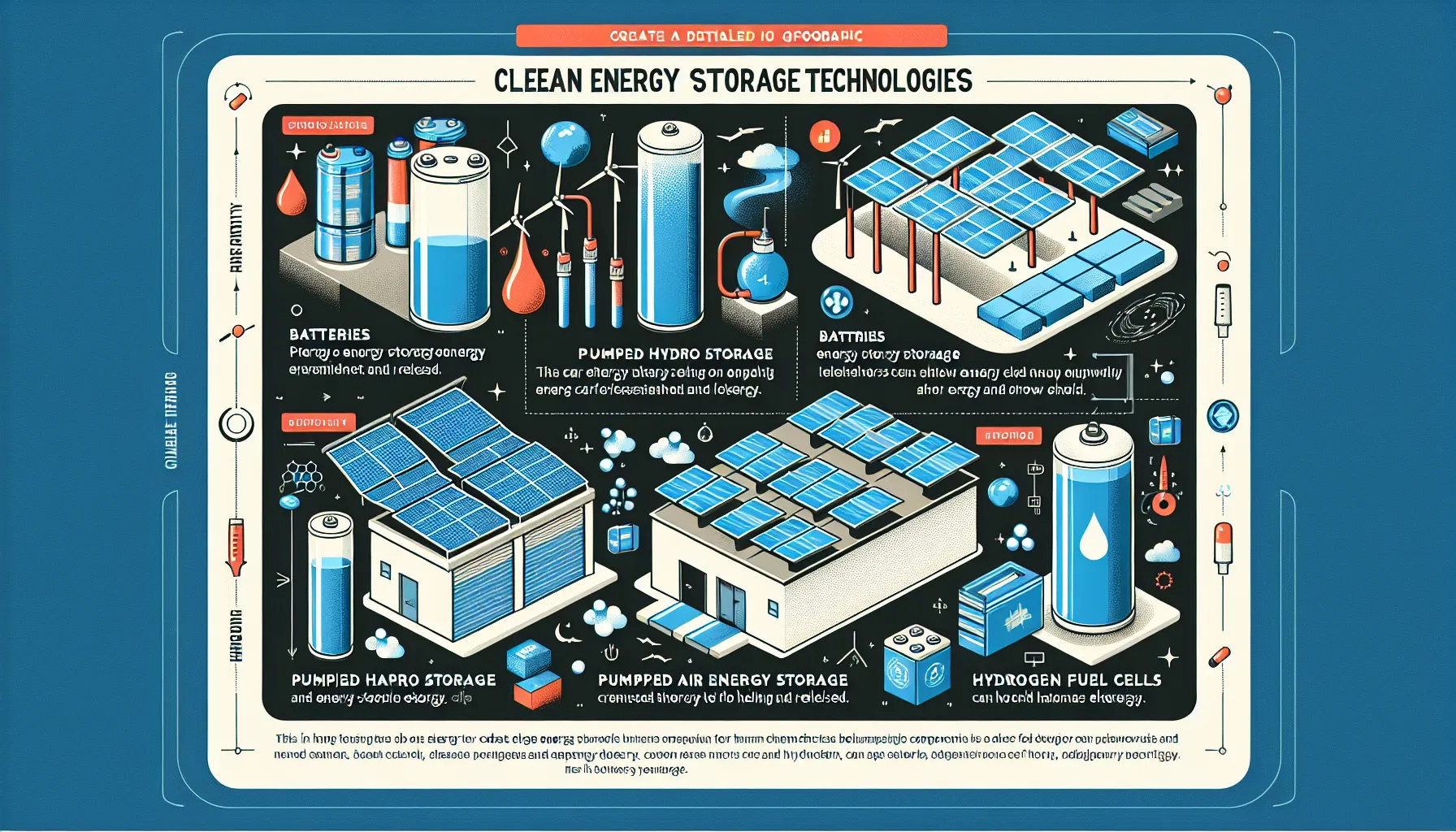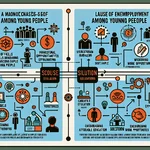Welcome to our IELTS Reading practice session focused on the future of clean energy storage. This topic is not only relevant for your IELTS preparation but also crucial for understanding the evolving landscape of sustainable energy solutions. Let’s dive into a comprehensive reading test that will challenge your comprehension skills and expand your knowledge on this important subject.
 Clean energy storage solutions
Clean energy storage solutions
IELTS Reading Test: The Future of Clean Energy Storage
Passage 1 – Easy Text
The Promise of Clean Energy Storage
As the world shifts towards renewable energy sources, one of the biggest challenges we face is how to store this clean energy effectively. Unlike fossil fuels, which can be burned on demand, renewable sources like solar and wind are intermittent – they don’t produce energy consistently throughout the day or year. This is where energy storage comes in, playing a crucial role in the transition to a sustainable energy future.
Energy storage systems act like giant batteries, capturing excess energy when it’s produced and releasing it when needed. This not only helps to balance supply and demand but also ensures a stable and reliable power supply. As technology advances, we’re seeing a range of innovative storage solutions emerge, each with its own unique advantages and applications.
One of the most promising technologies is lithium-ion batteries, which have seen significant improvements in recent years. These batteries are becoming more efficient, cheaper, and longer-lasting, making them ideal for both small-scale home use and large grid-scale applications. Another exciting development is flow batteries, which store energy in liquid electrolytes. These have the potential for much longer storage durations and could be particularly useful for seasonal energy storage.
Hydrogen is also gaining attention as a versatile energy carrier. Through a process called electrolysis, excess renewable energy can be used to split water into hydrogen and oxygen. The hydrogen can then be stored and used later in fuel cells to generate electricity, or it can be used directly in industrial processes or transportation.
As we look to the future, research is ongoing into even more advanced storage technologies. Solid-state batteries, for example, promise higher energy densities and improved safety compared to current lithium-ion batteries. Meanwhile, thermal energy storage systems are being developed to capture and store heat from industrial processes or concentrated solar power plants.
The development of these storage technologies is not just a technical challenge but also an economic one. As costs continue to fall and efficiencies improve, we’re likely to see widespread adoption of energy storage systems. This will not only support the growth of renewable energy but also contribute to a more resilient and flexible energy grid.
In conclusion, clean energy storage is set to play a pivotal role in our sustainable future. By enabling us to harness the full potential of renewable energy sources, these technologies are paving the way for a cleaner, more efficient energy system that can meet the growing demands of our modern world.
Questions 1-7
Do the following statements agree with the information given in the reading passage?
Write:
TRUE if the statement agrees with the information
FALSE if the statement contradicts the information
NOT GIVEN if there is no information on this
- Renewable energy sources like solar and wind produce energy consistently throughout the day and year.
- Energy storage systems help balance the supply and demand of electricity.
- Lithium-ion batteries are becoming less efficient over time.
- Flow batteries have the potential for longer storage durations compared to lithium-ion batteries.
- Hydrogen can only be used in fuel cells to generate electricity.
- Solid-state batteries are currently widely used in the energy storage industry.
- The development of energy storage technologies faces both technical and economic challenges.
Questions 8-13
Complete the sentences below.
Choose NO MORE THAN THREE WORDS from the passage for each answer.
- Energy storage systems function similarly to , storing excess energy for later use.
- Lithium-ion batteries are suitable for both small-scale and large grid-scale applications.
- Hydrogen can be produced from water through a process called ___.
- ___ systems are being developed to capture and store heat from industrial processes.
- The widespread adoption of energy storage systems is likely as ___ continue to fall and efficiencies improve.
- Clean energy storage technologies are contributing to a more ___ and flexible energy grid.
Passage 2 – Medium Text
Innovations in Clean Energy Storage: Overcoming Challenges
The transition to a clean energy future hinges on our ability to store renewable energy efficiently and cost-effectively. As we push the boundaries of technology, researchers and engineers are developing innovative solutions to address the unique challenges posed by intermittent energy sources like solar and wind. These advancements are not only improving existing storage methods but also introducing entirely new concepts that could revolutionize the energy landscape.
One of the most significant breakthroughs in recent years has been the development of advanced grid-scale batteries. These massive energy storage systems are capable of storing and distributing power on a scale that was previously unimaginable. For instance, the Hornsdale Power Reserve in South Australia, powered by Tesla’s lithium-ion batteries, can store enough energy to power 30,000 homes for an hour during peak demand. This type of large-scale storage is crucial for stabilizing the grid and allowing for greater integration of renewable energy sources.
Another promising avenue is the use of artificial intelligence (AI) and machine learning in energy storage management. These technologies can predict energy demand patterns, optimize charging and discharging cycles, and even anticipate equipment failures before they occur. By making energy storage systems smarter and more efficient, AI can significantly reduce costs and improve reliability.
Researchers are also exploring more unconventional storage methods. One such approach is gravity-based storage, which involves using excess renewable energy to lift heavy weights or pump water uphill. When energy is needed, the weights are lowered or the water is released through turbines, generating electricity. This method has the advantage of being able to store large amounts of energy for long periods with minimal losses.
The concept of vehicle-to-grid (V2G) technology is gaining traction as electric vehicles become more prevalent. This system allows electric cars to not only draw power from the grid but also feed it back when needed. Essentially, this turns millions of electric vehicles into a vast, distributed energy storage network, providing a flexible buffer for the grid.
Thermal energy storage is another area of innovation, particularly for industrial applications. Phase change materials can absorb and release large amounts of energy as they transition between solid and liquid states. This property can be harnessed to store excess heat from industrial processes or renewable sources, which can then be used for heating or converted back into electricity when needed.
One of the most exciting frontiers in energy storage is the development of long-duration storage technologies. While lithium-ion batteries are excellent for short-term storage, they are less suitable for storing energy over weeks or months. New technologies like flow batteries and compressed air energy storage are being developed to address this gap, allowing for seasonal energy storage that can help balance supply and demand throughout the year.
As these technologies continue to evolve, we’re also seeing advancements in materials science that promise to make energy storage more efficient and sustainable. Researchers are developing new electrode materials, electrolytes, and cell designs that could dramatically increase the energy density and lifespan of batteries while reducing their environmental impact.
The future of clean energy storage is not just about technological innovation; it’s also about integration and system design. As we move towards a more decentralized energy grid, the ability to seamlessly integrate various storage technologies with renewable energy sources and smart grid systems will be crucial. This holistic approach to energy management will be key to creating a resilient, flexible, and sustainable energy infrastructure.
In conclusion, the field of clean energy storage is rapidly evolving, driven by the urgent need to transition away from fossil fuels. While challenges remain, the pace of innovation suggests that we are on the cusp of a new era in energy storage – one that will play a vital role in shaping a cleaner, more sustainable future for our planet.
Questions 14-19
Choose the correct letter, A, B, C, or D.
-
What is the main advantage of advanced grid-scale batteries?
A) They are cheaper than traditional batteries
B) They can power individual homes for long periods
C) They can store and distribute power on a massive scale
D) They are exclusively used for solar energy storage -
How does artificial intelligence contribute to energy storage management?
A) By physically storing energy
B) By predicting demand and optimizing operations
C) By replacing human operators entirely
D) By generating renewable energy -
What is unique about gravity-based storage methods?
A) They use heavy weights or water
B) They are the most efficient storage method
C) They only work with solar energy
D) They require no maintenance -
How does vehicle-to-grid (V2G) technology function?
A) It allows electric cars to charge faster
B) It enables cars to generate their own electricity
C) It turns electric vehicles into a distributed storage network
D) It replaces traditional power plants -
What is the main advantage of thermal energy storage using phase change materials?
A) It’s the cheapest form of energy storage
B) It can absorb and release large amounts of energy
C) It works only with solar energy
D) It’s the most widely used storage method in industry -
Why are long-duration storage technologies being developed?
A) To replace lithium-ion batteries entirely
B) To store energy over weeks or months
C) To make energy storage more expensive
D) To reduce the need for renewable energy sources
Questions 20-26
Complete the summary below.
Choose NO MORE THAN TWO WORDS from the passage for each answer.
Clean energy storage is crucial for the transition to a sustainable energy future. Advanced (20) batteries, like the Hornsdale Power Reserve, can store enough energy to power thousands of homes. (21) is being used to make storage systems smarter and more efficient. Unconventional methods like (22) storage use excess energy to lift weights or pump water uphill. (23) technology allows electric cars to become part of a distributed storage network. For industrial applications, (24) storage using phase change materials is showing promise. To address seasonal storage needs, technologies like flow batteries and (25) are being developed. Advancements in (26) ___ are also contributing to more efficient and sustainable energy storage solutions.
Passage 3 – Hard Text
The Paradigm Shift in Clean Energy Storage: Emerging Technologies and Global Implications
The global transition towards renewable energy sources has precipitated an unprecedented surge in research and development of clean energy storage technologies. This shift is not merely a technological evolution; it represents a fundamental reimagining of our energy infrastructure, with far-reaching implications for economic models, geopolitical dynamics, and environmental sustainability. As we stand on the cusp of this energy revolution, it is imperative to examine the multifaceted landscape of emerging storage solutions and their potential to reshape our world.
One of the most promising frontiers in energy storage lies in the realm of advanced electrochemistry. While lithium-ion batteries have dominated the market in recent years, their limitations in terms of energy density, charging speed, and reliance on rare earth metals have spurred the search for alternatives. Solid-state batteries, which replace liquid electrolytes with solid compounds, are poised to overcome many of these constraints. These batteries offer higher energy densities, improved safety profiles, and the potential for faster charging times. Moreover, the development of sodium-ion batteries presents an attractive option for grid-scale storage, leveraging the abundance and low cost of sodium compared to lithium.
The concept of chemical energy storage is gaining traction as a means of long-duration storage. Power-to-X technologies, where excess electrical energy is converted into chemical forms such as hydrogen or synthetic methane, offer a pathway to store energy for extended periods. This approach not only provides a solution for seasonal energy storage but also opens up possibilities for sector coupling – the integration of energy consumption sectors with the power production sector. For instance, hydrogen produced from renewable electricity can be used not only for power generation but also in industrial processes, heating, and transportation.
Mechanical energy storage systems are undergoing a renaissance, with innovative designs pushing the boundaries of efficiency and scalability. Advanced Compressed Air Energy Storage (A-CAES) systems, which compress air using renewable energy and store it in underground caverns or specially designed containers, are being developed with improved efficiency and reduced geographic constraints. Similarly, flywheel energy storage is finding new applications, particularly in grid stabilization and frequency regulation, thanks to advancements in materials science that allow for higher rotational speeds and energy densities.
The integration of artificial intelligence and machine learning into energy storage systems heralds a new era of smart grids capable of predictive maintenance, real-time optimization, and adaptive load balancing. These intelligent systems can analyze vast amounts of data from weather patterns, energy consumption trends, and market dynamics to optimize the charging and discharging of storage units, thereby maximizing efficiency and reducing costs. Furthermore, the concept of virtual power plants – networks of decentralized, medium-scale power generating units such as wind farms, solar parks, and Combined Heat and Power (CHP) units – is becoming increasingly viable, allowing for more flexible and resilient energy systems.
The geopolitical implications of this shift in energy storage paradigms are profound. As countries race to secure the resources and intellectual property necessary for dominance in this field, new alliances and tensions are emerging. The critical minerals required for many storage technologies – including lithium, cobalt, and rare earth elements – are unevenly distributed globally, leading to concerns about supply chain vulnerabilities and resource nationalism. This has spurred efforts to develop technologies that rely on more abundant materials and to establish circular economies for battery recycling and repurposing.
Environmental considerations are increasingly shaping the trajectory of energy storage research. The imperative to reduce the carbon footprint of storage technologies throughout their lifecycle has led to innovations in sustainable manufacturing processes, the use of bio-based materials, and the development of easily recyclable storage systems. For instance, organic flow batteries, which use quinones – organic molecules that can be derived from carbon-based feedstocks – offer a potentially more sustainable alternative to metal-based systems.
The economic ramifications of advanced energy storage extend beyond the energy sector. As storage technologies become more efficient and cost-effective, they enable new business models and market structures. The ability to time-shift energy consumption and production disrupts traditional utility models and empowers prosumers – consumers who also produce energy. This democratization of energy has the potential to foster innovation, increase competition, and drive down costs.
Moreover, the integration of large-scale storage into power grids necessitates a rethinking of regulatory frameworks and market designs. Policymakers and regulators are grappling with questions of how to value and incentivize storage services, how to ensure grid stability with high penetrations of variable renewable energy, and how to create fair market conditions that recognize the unique attributes of storage technologies.
As we navigate this transformative period in energy systems, it is clear that the future of clean energy storage is not just about technological breakthroughs. It is about creating a holistic ecosystem that encompasses technological innovation, policy frameworks, economic models, and societal acceptance. The successful integration of advanced storage solutions will require unprecedented collaboration across sectors, disciplines, and national boundaries. Only through such concerted efforts can we unlock the full potential of clean energy storage and pave the way for a sustainable, resilient, and equitable energy future.
Questions 27-31
Choose the correct letter, A, B, C, or D.
-
What is mentioned as an advantage of solid-state batteries over lithium-ion batteries?
A) Lower production costs
B) Higher energy densities
C) Longer lifespan
D) Wider availability of materials -
How does the passage describe the potential of Power-to-X technologies?
A) They are primarily useful for short-term energy storage
B) They offer a solution for seasonal energy storage and sector coupling
C) They are limited to power generation applications
D) They are less efficient than traditional storage methods -
What role does artificial intelligence play in energy storage systems according to the passage?
A) It replaces human operators in managing energy grids
B) It optimizes charging and discharging of storage units
C) It solely focuses on predicting weather patterns
D) It is mainly used for security purposes in energy systems -
How does the passage characterize the geopolitical implications of advancements in energy storage?
A) They are largely insignificant on a global scale
B) They primarily benefit developed countries
C) They are creating new alliances and tensions among nations
D) They have led to decreased interest in renewable energy -
What is described as a potential economic impact of advanced energy storage?
A) Increased centralization of energy production
B) Reduced competition in the energy sector
C) Empowerment of prosumers and disruption of traditional utility models
D) Stabilization of energy prices at current levels
Questions 32-37
Complete the sentences below.
Choose NO MORE THAN TWO WORDS from the passage for each answer.
-
Sodium-ion batteries are considered an attractive option for storage due to the abundance and low cost of sodium.
-
Advanced Compressed Air Energy Storage systems compress air using renewable energy and store it in underground caverns or ___.
-
The concept of ___ involves networks of decentralized, medium-scale power generating units.
-
The uneven global distribution of required for many storage technologies has led to concerns about supply chain vulnerabilities.


